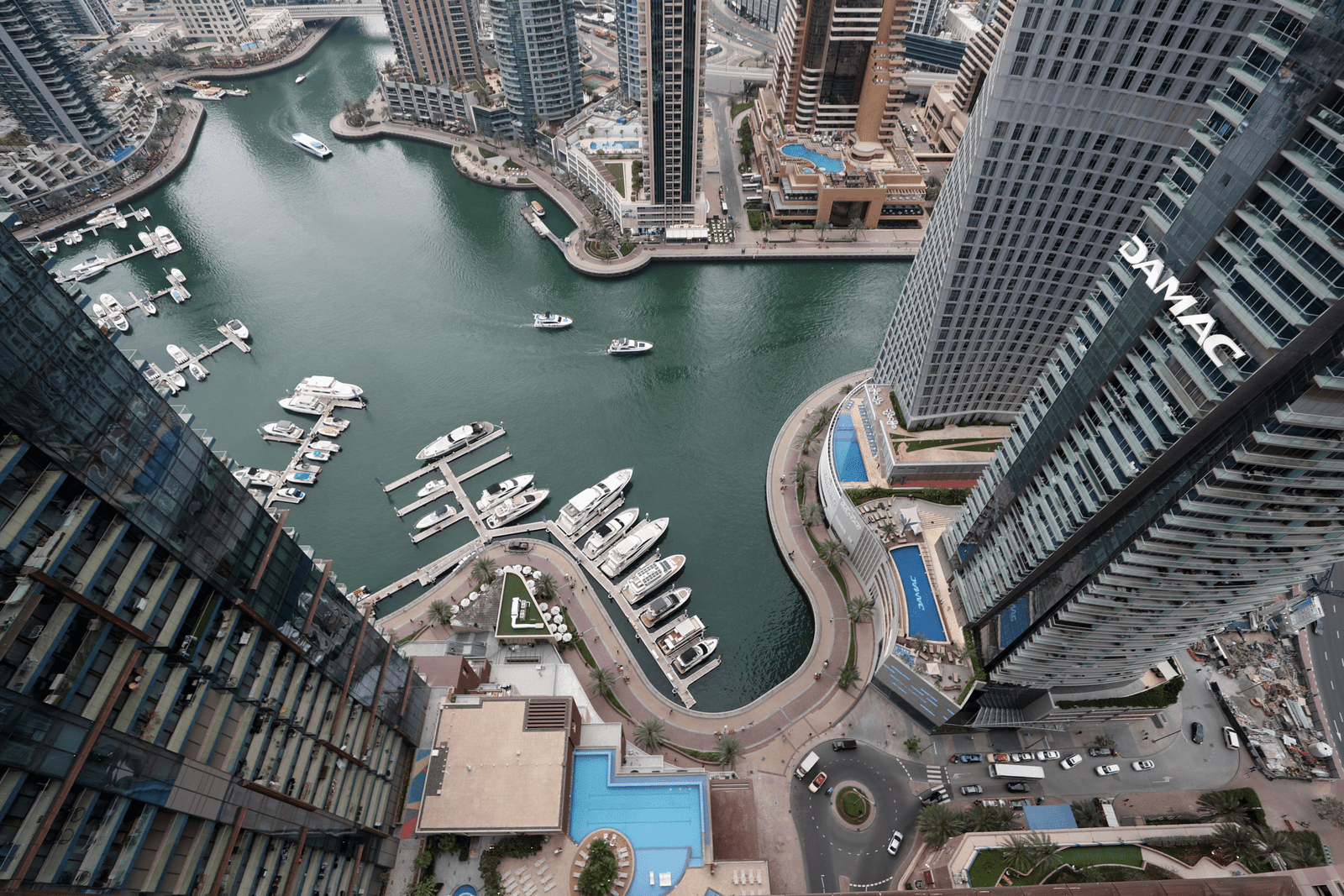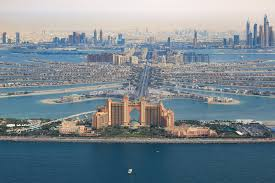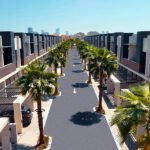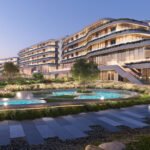Now Reading: Dubai Real Estate Market Forecast for 2026: What to Expect
-
01
Dubai Real Estate Market Forecast for 2026: What to Expect
Dubai Real Estate Market Forecast for 2026: What to Expect

Table of Contents
Dubai’s real estate market has been a global standout, driven by strong investor confidence, a tax-free environment, and a growing population. In 2025, the market recorded unprecedented transaction volumes, with AED 144.7 billion in Q2 alone, a 39.7% year-on-year increase, and luxury home sales above $10 million hitting $2.6 billion. As we look to 2026, here’s a detailed forecast for American investors eyeing Dubai’s real estate, with a focus on luxury villas, market trends, risks, and opportunities.
Market Overview for 2026
The Dubai real estate market is expected to maintain its upward trajectory into 2026, though at a more moderated pace due to a significant supply surge. Analysts predict a residential supply increase of approximately 182,000 units in 2025-2026, with 99,686 apartments and 15,284 villas expected in 2026 alone.
This influx, primarily from projects pre-sold in 2022-2023, could lead to price stabilization or slight corrections, particularly in the apartment segment. However, luxury villas in prime areas like Palm Jumeirah, Dubai Hills Estate, and Emirates Hills are likely to remain resilient due to limited supply and sustained demand from high-net-worth individuals (HNWIs).
The UAE Central Bank forecasts a robust GDP growth of 5.5% in 2026, with real estate as a key driver. Property prices are projected to rise by 3.5-5.2% in 2026, supported by tight inventory in premium neighborhoods and continued foreign investment. Rental yields, averaging 6-8.5% in 2025, are expected to remain strong, with prime areas like Dubai Hills Estate and Business Bay offering up to 7.5-8.5%.
Key Trends Shaping 2026
- Luxury Villas Remain a Safe Bet: Villas are outperforming apartments, with prices up 7.9% in 2024 compared to 4.2% for apartments. In 2026, only 15,284 new villas are expected, far fewer than the 99,686 apartments, ensuring limited supply and sustained price growth in areas like Palm Jumeirah and Dubai Hills Estate. Demand for spacious, family-friendly villas is driven by expatriates and HNWIs, with Palm Jumeirah recording 28 sales above $10 million in Q2 2025.
- Supply Surge and Potential Correction: The delivery of 182,000 units in 2025-2026, including 42,000 in 2026, could lead to a mild price correction of up to 15% in the apartment market, as forecasted by Fitch Ratings. However, construction delays, historically affecting 30-40% of projects, may soften this impact by spreading deliveries into 2027. Luxury villas in prime locations are less likely to face downward pressure due to their scarcity and prestige.
- Sustainability and Smart Technology: Eco-friendly and tech-enabled properties are in high demand, with 35% of transactions expected to involve sustainable properties by 2026, up from 15% in 2020. Developments like Dubai Sustainable City and projects with LEED certifications are attracting eco-conscious American buyers. Smart home features, including AI-powered security and IoT connectivity, are becoming standard in luxury villas.
- Foreign Investment and Visa Incentives: Dubai’s zero-tax regime, including no property or capital gains tax, continues to draw U.S. investors. The Golden Visa program, offering 5-10 year residency for investments above AED 2 million ($544,000), enhances appeal. In 2025, investors from Russia, France, and Gulf countries dominated, but U.S. interest is growing due to Dubai’s stability and high returns compared to markets like New York or London.
- Tourism and Infrastructure Boost: Dubai’s tourism sector, with 18.7 million visitors in 2024, supports real estate demand, particularly for short-term rentals, which are forecast to rise 18% in 2026. Mega-projects like the Al Maktoum International Airport expansion ($35 billion) and Dubai Metro Blue Line will enhance property values in areas like Dubai South and Dubailand.
Opportunities for American Investors
- Luxury Villas in Prime Areas: Focus on Palm Jumeirah, Dubai Hills Estate, and Emirates Hills for capital appreciation (5-8% annually) and rental yields (6-7.5%). Projects like The Palm Tower Residences and Serenia Living offer ultra-luxury villas with private beaches and high ROI potential.
- Off-Plan Investments: Off-plan villas in emerging areas like Palm Jebel Ali and Dubai South offer early-bird pricing and flexible payment plans (e.g., 60/40 over 3-5 years). These are ideal for long-term investors, with handovers expected in 2026-2028.
- Rental Income: Villas in family-friendly communities like Arabian Ranches and DAMAC Hills yield 7-8.5%, driven by expatriate demand. Short-term rental demand, boosted by tourism, makes waterfront villas particularly lucrative.
Risks to Consider
- Oversupply Risk: The 2026 supply surge could pressure apartment prices, though villas are less affected. Investors should prioritize prime locations to mitigate risks.
- Geopolitical and Economic Factors: Global economic slowdowns or geopolitical tensions could reduce foreign investment, though Dubai’s safe-haven status cushions this risk.
- Construction Delays: While delays may ease oversupply concerns, they could impact off-plan investors’ timelines. Choose developers like Emaar or Nakheel with strong track records.
- Interest Rates: Rising global interest rates in 2026 could affect mortgage affordability, though UAE’s dollar-pegged dirham minimizes currency risks for U.S. buyers.
Recommendations for U.S. Investors
- Target Luxury Villas: Invest in prime areas like Palm Jumeirah or Dubai Hills Estate for stability and high returns. Check projects by Emaar (properties.emaar.com) or Nakheel (nakheel.com).
- Leverage Off-Plan Opportunities: Secure off-plan villas in Palm Jebel Ali or Dubai South for lower entry prices and potential 5-8% appreciation by handover.
- Hire Experts: Engage RERA-licensed agents like MBR Properties to navigate the market and verify developer credentials.
- Plan for Taxes: While Dubai has no property taxes, U.S. citizens must report rental income and capital gains to the IRS. Consult a tax professional to optimize foreign tax credits.
- Monitor Supply Trends: Stay updated via platforms like DXB Interact to track handovers and market dynamics.
Final Outlook
Dubai’s real estate market in 2026 will offer strong opportunities for American investors, particularly in luxury villas, despite a potential mild correction in the apartment segment. With 3.5-5.2% price growth, 6-8.5% rental yields, and robust economic fundamentals, prime areas like Palm Jumeirah and Dubai Hills Estate remain top picks.
The market’s resilience, driven by population growth (projected to hit 4 million by 2026), tourism, and infrastructure investments, ensures long-term potential. By focusing on high-demand locations and reputable developers, U.S. investors can capitalize on Dubai’s dynamic market while mitigating risks from supply surges or global uncertainties. Real Estate
read more: Dubai Property: 6 High-Impact Launches Reshaping Investment Zones in 2025





















